Law & the Arts



6
AUGUST 2023
Volume 35 | Number 4
From the President
4 And That’s a Wrap!
Aleem Bharmal, KC
Executive Director
5 The Art of Appreciation
Kerry L. Simmons, KC
PracticeTalk
24 Moving to a New Accounting System
David J. Bilinsky
Guest Column
26 The Legacy of a Robe
Alexis Zornio
Nothing Official
29 Buy Art from Living Artists
Tony Wilson, KC
Isabel Jackson, Committee Chair Editorial Committee
Tonie Beharrell Eryn Jackson Demola Okeowo Lily Zhang
Brandon Hastings Judith Janzen Josephine Wong
Deborah Carfrae, BarTalk Editor
BarTalk is produced on the traditional and unceded territories of the Coast Salish peoples, including the Musqueam, Squamish, and Tsleil-Waututh Nations.
BarTalk is published six times per year by the Canadian Bar Association, B.C. Branch (CBABC) and is available at cbabc.org/bartalk. This publication is intended for information purposes only and is not legal advice.
CBABC supports more than 7,600 members in British Columbia. We connect our members to the people, knowledge, and skills they need to successfully practice.
BarTalk enquiries, suggestions, and letters to the editor:
Canadian Bar Association, B.C. Branch 10th Floor, 845 Cambie Street Vancouver, B.C. V6B 5T3
Membership Enquiries membership@cbabc.org
Contact Updates data@cbabc.org
t: 604.687.3404
tf: 888.687.3404
e: bartalk@cbabc.org
Advertising ads@cbabc.org
© Copyright 2023 The Canadian Bar Association, B.C. Branch
BarTalk Publication Sales Agreement #40741008

As many past CBABC presidents will tell you (and as you might expect), your term as president is a bit of a whirlwind and feels over before you know it. It seems a little early to try and make sense of it all, but two major themes emerged during my year as CBABC President: the return to in-person events with a vengeance; and the unfortunate attacks on the independence of our legal profession and the judiciary.
Although there was some expectation that we would slowly be restarting in-person gatherings, perhaps on a graduated return, it was remarkable how we were suddenly flooded with events, many with record attendance. There were some days I was attending multiple events per day — like a legal conference, welcoming ceremony and gala dinner.

It was heartening to see associations, such as the South Asian Bar Association BC, holding a record attendance legal conference this past November, with two SouthAsians, Jeevyn Dhaliwal on behalf of the Law Society of BC, and me on behalf of CBABC, providing opening remarks. Likewise, I was excited to attend the Federation of Asian Canadian Lawyers BC gala dinner, with almost 500 lawyers (another attendance record).
Meanwhile, this year’s CBABC events kept pace with full attendance at our Aboriginal Lawyers Forum Holiday Banquet, Women Lawyers Forum Awards Gala and
annual Vancouver Bench & Bar Dinner (which we co-hosted with the Vancouver Bar Association for the first time), to name just a few.
Not as exciting, and deeply disheartening, was the unexpected need for us to issue repeated public statements responding to attacks on our legal profession and the judiciary, and defending the critical importance of maintaining their respective independence to the rule of law.
As the issue of bail hearings and repeat offenders was a hot topic, these public statements garnered immediate media interest and coverage. The other hot topic has been the dearth of necessary judicial appointments being made by government, putting significant strain on our justice system — an equally critical issue, which our Executive Director, Kerry Simmons, KC, handled in an impeccably informed manner.
The behind-the-scenes CBABC staff preparation and support for all these events, public statements and media interviews, not to mention the amazing output of continuing
professional development, Section activity and written submissions was extraordinary this year. Special projects included a revised CBABC Reconciliation Action Plan, the new Practice Coaches Program and the Indigenous Lawyers Waiver of Dues Program.
Of the many CBABC submissions this year, the most significant was no doubt in response to the B.C. government’s paper providing notice of its intention to develop legislation that would regulate all legal service providers under a single statute by a single regulator. Again, our key message was the critical importance of maintaining the independence of the legal profession as the government moves forward with its initiative.
These worthy fights will all continue into the next term, ably led by incoming CBABC President Scott Morishita and an impressively diverse and fierce CBABC Board of Directors of which we should all be very proud. Personally, I can say without hesitation that it was an absolute honour and privilege to serve you this year with such a remarkable group of board members, volunteers and staff.
Aleem Bharmal, KC president@cbabc.org... your term as president is a bit of a whirlwind and feels over before you know it.


That look of joy on a person’s face when you let them know what they have done is valuable. Perhaps it is one of surprise because they didn’t think anyone noticed. Maybe you aren’t present to see that look, but you receive a text or email in response with happy emojis or words of acknowledgement. This is the result of appreciation.
Lawyers and their staff teams work tremendously hard in meeting clients’ and employers’ expectations. This is a tough job in challenging environments and being paid for our services is part of the deal. Being appreciated however, is next level. Appreciation is more than “thank you.” It is recognizing effort, worth, distinction. That which is appreciated doesn’t need to be monumental. The act of appreciation doesn’t have to be huge either.
Offering appreciation makes a huge difference. Receiving appreciation can be a boost of energy, a reassurance and sometimes a cathartic release. Those all-important serotonin levels can be positively affected by both offering and receiving appreciation. Appreciation can transform a working relationship or a volunteer experience and can be critical during career and life transitions.
I always encourage early career lawyers to keep expressions of appreciation from clients, mentors or supervisors. Re-reading that email or card on the not-so-good days reminds you that your work is valued. And be sure to forward
expressions of appreciation of your staff to them (and deliver your own). That is a great way to build teamwork and your team’s confidence.
CBABC appreciates our hundreds of volunteers. This association can’t deliver on its promise to members without that partnership between volunteers and staff. At our June Provincial Council meeting, our advisors received gifts of appreciation and we recently delivered gifts and messages to our Section executives and Committee volunteers.
Planning meetings for members, working on submissions to government, supporting Section executives, and advising our staff is valuable. We know it takes time. It takes extra effort on your part and a sacrifice of home and work time. Your work and insights help us improve what and how we support members of CBABC.
Appreciation can be shown to those who report to us and our peers. It also makes a difference to those a bit ahead of us. Thanking our mentors, champions and teachers, and sharing stories of seemingly inconsequential moments that had meaning, tells that colleague that their life is not just about the business of law, but about the relationships that make this career choice worthwhile. In this season of awards presentations, call and welcoming ceremonies, and retirement celebrations, I’ve watched the impact of these stories on
the honorees. Being told you are valued can never be overdone.
Studies have found that due to negativity bias, we need to hear 5-7 positive comments to overcome one negative. Think about that. Are you getting enough appreciation, positive interactions or praise? Appreciation can go a long way to balancing out those negative comments. And there are benefits to those who offer appreciation too! The practice of gratitude, to purposefully identify something good, is related to appreciation, and similarly has positive health impacts.
How to deliver appreciation? Well, it is a bit of an art, but here are the basics. It starts with paying attention and identifying what someone has done that is valuable to you. Being specific about that increases the impact of your appreciation. Then you tell them with words, a lawyer’s stock and trade. To truly land the message, be sure to follow up with actions that show that your words were authentic (appreciation can take the form of actions too).
As we head into the busy fall term, look for opportunities to express appreciation. You’ll be glad you did.
Kerry L. Simmons, KC ksimmons@cbabc.orgBack when the printing press first came into use, copyright was simple and sweet. Over time, copyright has evolved into a complex area of law. Now, add in new developments, like NFTs (non-fungible tokens) and AI (artificial intelligence), and copyright issues become exponentially more complicated, as well as philosophical.
Copyright is a principal means for protecting creative works. Creativity and artistic expressions have historically been a big part of what separates us from machines. For example, the U.S. Copyright Office takes the position that copyright can protect only material that is the product of “human creativity.” However, if you have had a chance to try ChatGPT or Dall-E, you might find these AI programs give the illusion of being creative. So, what makes human creativity and what does copyright have to do with it? We will try to make sense of this new wave of digital revolution and its impact on copyright against the philosophical question of “human creativity.”
To unpack the copyright issues in the context of digital artistic works, let’s start by unpacking NFTs. While NFTs have come to be associated with specific collections of very expensive digital artwork (think Bored Ape Yacht Club), the artwork and the underlying NFT
are actually separate elements. The NFT is a unique digital identifier that is recorded on a blockchain, which can be used to certify ownership and authenticity. As a piece of information, the NFT itself is not subject to copyright protection, but artwork associated with the NFT can be.
In practice, NFTs are usually created using collections of artwork, involving thousands of individual works. That collection of artwork is frequently generated with the assistance of a computer, which may or may not involve the use of AI. If a computer or AI is involved in the creation of the artwork, there is an issue as to whether copyright subsists at all. Many countries,
Canadian IP Office recently granted registration for SURYAST, an artistic work identifying AI as a co-author.
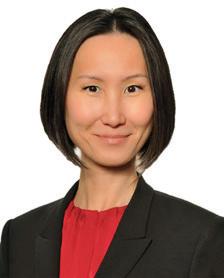
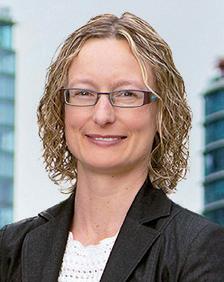
Thus, whether an artistic work is protected by copyright or not depends on how much “human creativity” was involved. If there is not enough human involvement, the resultant artwork is not protected by copyright, and anyone may freely reproduce it. As a further wrinkle, even assuming there is sufficient human involvement to give rise to copyright, creation and transfer of
including the U.S. and EU, have taken the position that a work that is generated purely by AI cannot be the subject of copyright protection. However, AI-assisted works may be copyrighted. For example, the
the NFT generally does not include a transfer of copyright (although this is fact specific). So, the owner of the NFT may well not own copyright in the underlying artistic work represented by the NFT. This leaves the question of what exactly the NFT is rather muddy.
As we approach the word limit, we fear that we have made little sense of copyright, AI and NFTs, although we have pointed out some issues to consider. However, this particular intellectual exercise and the various feelings, e.g., curiosity and frustration, that are associated with it are perhaps what ultimately make us “human” lawyers.
Creativity and artistic expressions have historically been a big part of what separates us from machines.
 KOJFMAN
KOJFMAN
When people ask what I do for work, I say, “professional stand-up comic.” I usually leave out some details: I’ve only performed twice; I was paid with high-end gift baskets (consideration is consideration). But who really needs those?
I come from a long line of stand-up comedians — Seinfeld, Burns, Marx (Groucho not Karl) — if you go back to biblical Abraham. My younger brother was a stand-up comic — he even made real money from corporate and other gigs. He retired, and I picked up the mantle, going into the family business, like the Hemsworths, just less muscly and good looking, and more neurotic.
You never forget your first: the hot lights; the sweats; the dead silence when you’ve done it wrong. My comedy debut in April 2021 was over Zoom, my second monitor as a teleprompter, and only my own living room light behind me. I still had to deliver funny material.
There’s a number of stand-up classes in Vancouver. I took exactly none of them. I’m a solicitor; unlike a litigator, I never really stand up and deliver a speech to an audience; my deft skills using Microsoft’s track changes features were of no value.
I had a few things in my corner: a friend who coaches mooters to help with pacing and cadence; and my brother who could tell me if a
joke would land. One joke I thought was hilarious; my brother said it required “implied knowledge” — facts the audience already knows, otherwise the joke bombs. Nowadays, the biggest challenge is determining if a joke is offcolour, or if it just approaches that line. Eddie Murphy’s standup in the 1980s had a number of insensitive jokes about AIDS; he’s since apologized for those. The Supreme Court of Canada deter mined one comic’s jokes about a disabled teenager were not dis criminatory because the teenager was a celebrity, and jokes about being a celebrity are not a prohibited ground of discrimination. Most lawyers dream of making legal history; that’s NOT the kind I want to make.
Except for the odd joke about my own ethnicity — Jewish — I don’t want to make jokes that are off-colour. I have jokes about extra-marital affairs; I know people who have been on both sides of that coin; if they’re in the audience, they may find those jokes triggering. I don’t know if I’d want to make those jokes in front of them.
If a lawyer writes an article for a lawyer publication and does not mention a legal issue, was that article really written? There’s no copyright when a joke is told, only when written down, and the author
has an exclusive right to perform it. Legend has it, when Robin Williams would visit Vancouver comedy clubs, no one wanted to get on stage, fearing their jokes would be stolen. There’s no copyright violation if your original material is the same as someone else’s if you had no prior knowledge of the other material. A comic’s biggest scarlet “A” is accusations of stealing another comic’s material.
As much as I love the look on people’s faces when I reply, “professional stand-up,” I have concerns pursuing it.
One concern is brand. Someone records my stand-up, part of a joke is on-line, which without the rest of the joke is off-colour. I’d like to serve on charity and for-profit boards in the future, or even just stay gainfully employed. The internet is judgmental and vitriolic. I don’t want to be burned in effigy or spend hours and energy defending myself because of something taken out of context. I’m willing to do it for things taken in context. And it’s not just about me. My wife is a lawyer, and we have a young child. They should not have to deal with my out-of-context failings.
As cool as it would be to do standup for real, to get the 10,000 hours would mean lots of open mics, take me away from practising for the World Series of Poker being with my family, and getting better at my lawyer side-hustle.
As another membership year winds down, the Canadian Bar Association, B.C. Branch continues to play a vital role in championing legal reform, shaping policies, and working to ensure a just and equitable legal system for all. We engage the provincial government through written submissions, committee appearances and informal meetings. Through regular consultation with policymakers, the Law Society of British Columbia, the courts and other stakeholders, we lead initiatives on behalf of the legal profession and in partnership with our justice system partners.
Our advocacy centres around what is important to our members, who develop and decide our policy and law reform positions. The next sitting of the B.C. Legislature starts on Tuesday, October 3.In determining priorities for 2023-2024, we consulted with our members and advisors, and considered the status, importance and urgency of our existing recommendations.
This year, we will place particular focus on the following:
SINGLE REGULATOR: Advocating for lawyers’ self-regulation to ensure they remain independent from government and that British Columbians’ public rights are protected. CBABC is preparing focused submissions on the proposed scope of practice for notaries as well as meeting with government officials to reinforce our positions, as presented in our submission last fall. Selfregulation means lawyers must be the majority of the governing board.
LEGAL AID: Calling for funding toward family law legal aid so families can have legal representation in typical family law matters and more people can access family law legal aid services. These include
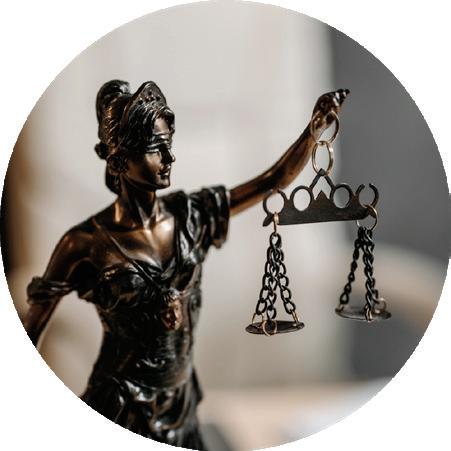 \ EMAIL: ADVOCACY @CBABC.ORG
\ EMAIL: ADVOCACY @CBABC.ORG
divorce, guardianship and parenting arrangements, child and spousal support and asset/debt management. This was highlighted in our 21st submission to the Select Standing Committee on Finance and Government Services as part of the government’s Budget 2024 Consultations in June.
COURT
Driving forward digitalization of B.C.’s justice system through recommending the government:
Implement presumptively virtual hearings for short, routine matters in civil and family law proceedings, with the ability to appear inperson where needed. We recently delivered a submission to the Attorney General recommending a more intentional and user-centred approach to the design of future virtual courtroom experiences.
Develop an online booking system for trials, Chambers and other proceedings.
Move all chambers records online so they are accessible to judges, masters, and court clerks regardless of physical location. We have supported the Vancouver Island pilot project.
Review the assize system of scheduling trials and long chambers applications and explore an alternative model.
JUDICIAL INDEPENDENCE: Advocating on the issue of judicial independence, increasingly under attack. Recently, the CBA held “Courting Confidence: Preserving Trust in Judicial Independence.” to explore strategies for strengthening the public’s understanding of our justice system through media, public relations and public education.

Managing passionate personalities, facilitating strange requests and learning the language of the film and TV industry are all in a day’s work in practising entertainment law. That’s what makes it so great.
Six months into articling at an insurance defence litigation firm, I almost ran screaming from the idea of practising law altogether. It was just not for me. I knew I needed to combine what I loved (Dear reader, it was not and will never be insurance) with what I was trained to do. The arts, especially dance and music, had always appealed, but it wasn’t until my brother, an aspiring musician, cut his own objectively terrible recording deal that my path into entertainment law became clear. With the idea that I could help artists get a fair shake with my legal skills, I started working on behalf of musicians and then segued into private practice for film and television law — and I have not been tempted to run away once.
Entertainment law is never boring. The film and TV business is driven by emotionally invested creators and producers who look upon their projects as parents might their children — they are precious and must be protected at all costs. Their decisions are frequently driven by emotion more than any business case offered in support of them. So, often, an individual’s legal skills are secondary
to their ability to manage these passionate personalities in a way that produces an outcome where everyone feels seen and heard equally.
Beyond the people management that keeps you on your toes, there are the truly strange situations and requests you encounter. I have performed voice work for a scratch animation test at the request of a client whose actor failed to show up at a recording session. There have been several very awkward one-on-ones where I’ve found myself face-toface with directors and actors I’ve admired, instructing them on the dos and don’ts of appropriate workplace behaviour. What is it they say about never meeting your idols? Then there
its unique language. You’re dealing primarily with artistic people who will look to you for advice on industry standard rates and practices as much as they will for your understanding of copyright law. You’ll often get contracts back littered with industry terms, not legal ones. “The first bite of the apple,” “a 100, 50/50 payout,” “triple bangers” or “100 over 5 royalties” are all things that, when starting out, I had to ask other entertainment lawyers about. There is no formal glossary of entertainment terminology to help you out with this — it’s all about on the job training.
are the talent riders — everything you’ve heard is true. No ask is too outré to be considered. One actor requires a vegan meal delivery service, the other on the same show asks for only a case of tequila and a carton of cigarettes? Fine. Entertainment lawyers make sure it’s all there in black-and-white to follow to the letter.
To be truly successful in this field, you need to learn the industry and
It is a steep learning curve, but it’s an absolute thrill every time I see my name roll by in the credits of a film or TV series that I’ve played a part in. And that sense of accomplishment — being instrumental in bringing a creative enterprise to fruition — is also why I’ve transitioned from private practice to corporate counsel. Along with becoming colleagues with one of my mentors, Sarah Nathanson, working in-house now at Thunderbird Entertainment means being part of a large legal and business affairs team; it engenders connection to the content we make that didn’t frequently exist in private practice. It’s true. There’s no business like show business. And oh, I do love it so!
Lori Massini currently serves as Senior Vice President, Legal and Business Affairs at Vancouver-headquartered Thunderbird Entertainment. She has also created online course Producer Essentials: A Comprehensive Guide to Business Affairs and Production Law for Film and Television, with fellow entertainment lawyer Heather Watt, to help those interested in the field.
Twitter: @tbirdent — Instagram — LinkedIn
Entertainment law is never boring.
Whether you appreciate them or not, most people would agree tattooing is an art form. Original artistic works, such as paintings, engravings and drawings, are protected under the Canadian Copyright Act. It is reasonable to assume the courts will, when the time comes, extend the same protection to tattoos — U.S. courts have held that copyright applies to original tattoos.
Assuming Canadian courts follow the U.S. approach, copyright in a tattoo would provide an exclusive right to reproduce that tattoo or any substantial part thereof. As a result, infringement would arise from an unauthorized reproduction of the tattoo. Examples could include a tattooist creating a tattoo by copying an existing artwork or another tattooist’s tattoo. As a result, tattooists should avoid copying protected images or tattoos.
Taking a photograph of a tattoo could also be an infringing reproduction. Similarly, infringement may occur from displaying the tattoo in a movie or on avatars in a video game or the metaverse. For example, a jury in the Southern District of Illinois ordered a video game maker to pay a tattoo artist for displaying the wrestler Randy Orton’s tattoos in a video game. The U.S. decisions on tattoos appear to be fact dependent: the same video game defendant successfully dismissed a different claim alleging infringement of
tattoos of well-known basketball players whose likenesses were featured in the NBA 2K game. The claim was dismissed in part because of the minimal nature of the copying and a finding that the tattooist granted the players implied licenses to use the tattoos. Readers may also remember the lawsuit brought in the U.S. against the producers of The Hangover — Part II over the unauthorized reproduction of Mike Tyson’s face tattoo. The claim was, however, settled out of court.
So, who owns copyright in a tattoo? Generally, a tattooist would be considered the owner of the rights unless they were an employee when the work was created. In that case, the employer may be the owner. Anyone wishing to recreate or display a tattoo
should obtain a license from the owner or acquire it by assignment. The tattooist also possesses moral rights in the tattoo, which include the right to the integrity of their work and the right to be associated with their work. A breach of
moral rights is a separate claim to copyright infringement. In Canada, moral rights cannot be assigned, but they can be waived. So next time you get a tattoo, consider obtaining both a waiver of moral rights and a licence or assignment of copyrights from the tattooist. Anyone wishing to use their image in video games or in the metaverse should do this to avoid any legal claims in the future. What is next for tattoos in Canada? We will likely have a decision from a Canadian court soon on copyright and tattoos, particularly as the use of avatars and the metaverse expands. Another important issue to consider is the appropriation of cultural elements in tattoos. Appropriation occurs when an element is taken from its cultural context and used in another. For example, what if a tattoo, which is protected by copyright, also includes Indigenous designs? The World Intellectual Property Organization is presently negotiating an international legal instrument intended to provide protection, through intellectual property law, for traditional cultural expressions such as designs, signs and symbols. This proposed legal instrument would arguably include Indigenous tattoos. However, the negotiation process has been ongoing for many years and is not expected to be resolved soon. In the meantime, the most likely method of resolving such unauthorized use would be through copyrights.

Copyright in a tattoo would provide an exclusive right to reproduce that tattoo or any substantial part thereof.
Courthouse Libraries BC’s collection may primarily comprise broad-relevance legal texts, but intriguing esoteric titles can also catch our interest. One recent addition to our collection bridges law and the fine art trade. Art Law: Cases and Controversies delves into the legal facets of the art world. This comprehensive resource, available through Courthouse Libraries BC, explains various legal aspects of the fine arts, from copyright and the nebulous ownership rights of public graffiti to legal remedies for fraud and forgery.
The work underscores the unique legalities shaped by the digital age and discusses and contrasts the legal frameworks in Canada and the United States, adding invaluable cross-border context to the discussion.

Another recent acquisition, Undocumented: The Architecture of Migrant Detention, is an example of how art can be used to fix a legal lens. It is a comic book that uses a blend of architectural sketches and interviews to convey the harsh realities of Canada’s migrant detention system.
Art here becomes a medium for legal discussion, humanizing abstract concepts. It’s interesting to see the discipline of architecture being used to ask the very questions that compel justice principles to. The law, after all, is not merely black and white text but is alive with stories and experiences. Many of these can be captured through the prism of art.
For over a century, lawyers have appeared in both the movies and on television. Audiences have been captivated by the administration of justice, the prosecution of crime and the legal profession as a whole.
Early on, shows dealing with lawyers portrayed us in a positive light, both as decent people and competent professionals. As the years pass by, we have seen lawyers acting self-indulgently and sometimes unethically.
A great fictional lawyer can inspire future lawyers and remind real-world lawyers why they do what they do.
There are few more iconic on-screen lawyers than Atticus Finch defending someone in a hostile environment because it is the right thing to do. Harper Lee’s lawyer protagonist in To Kill a Mockingbird may be as one academic described: “the dream that young lawyers hope to achieve and that old lawyers regret having lost.”
When it comes to titans of television lawyers, Perry Mason is certainly one of them. Played by Raymond Burr, a native of New Westminster. Mason was a brilliant and dedicated defence lawyer tasked with taking on the most impossible of cases.
He was assisted by his secretary Della Street, played by Barbara Hale, and his private investigator Paul Drake, played by William Hopper. With the help of his two sidekicks, Mason didn’t just defend his clients,
he used a variety of ingenious ideas to shape the law and save his clients from wrongful imprisonment.

For over a century, women have been appearing as lawyers in the movies. The Reckoning Day is perhaps the earliest film featuring a female lawyer. It was produced by the Triangle Film Corporation in 1918 and introduced viewers to a lawyer named Jane Whiting. While she was no Atticus Finch or Perry Mason, Whiting was able to expose a nefarious gang of spies and rescue the young son of a prominent senator.
Perhaps the famous and enduring of films featuring a female lawyer is the comedy Adam’s Rib, in which husband and wife lawyers played by Spencer Tracy and Katherine
defence of the wife and trounces Adam in the courtroom.
You would be hard pressed to find a more dedicated lawyer than Law & Order’s Jack McCoy. Played by Sam Waterston, the character is steadfastly committed to getting criminals off the street. For 16 years, Jack McCoy was consistently superb at his job and, unlike many other television lawyers, Jack was presented in a serious way as someone who would always get the job done.
It’s hard to think of television lawyers these days and not think of the unethical and corrupt Saul Goodman, played by Bob Odenkirk. However, it cannot be denied that Saul is successful in his work. Sure, he defends people who do not deserve to be defended, and helps them get away with some atrocious activities. But, if they are paying clients, then who can blame Saul?
Yes, the world needs more lawyers like Atticus Finch, armed with the intangible qualities that set us apart: the specialist expertise, altruism, ethics and the trustworthiness that defines our professionalism.
We need the decency and determination of Perry Mason. We need the elegance and enthusiasm of Jack McCoy. And, we need the independence and integrity of Amanda Bonner.
Hepburn square off in the courtroom and the bedroom. There is trouble in paradise when husband Adam Bonner, a district attorney, pursues the prosecution of a wife for the attempted murder of her husband. Wife Amanda Bonner takes up the
The hope must be that some of these old-fashioned notions of faithful and selfless service will live on in those who practice law in the movies, on the television screen and in real life.
A great fictional lawyer can inspire future lawyers and remind real-world lawyers why they do what they do.KRISTA JAMES
During my youth I was always drawing and making art. I was also passionate about access to justice and keen to acquire skills I could lever to help redress wrongs and contribute to system change. I perceived art and law as divergent pathways, and I chose law.
In my mid-thirties I took a break from law and studied at Emily Carr University. I focused on film, video and performance art. When I returned to legal practice, I was surprised to discover that art school had made me a better lawyer.

Film and video-making are collaborative. You need people on camera, lighting and sound. You need actors. You need help to transport equipment and prepare the set. You may need assistance to edit sound and imagery. Most of us found the element of the practice that was our strength, and we relied on classmates to bring their talents to our projects.
In contrast, law school is highly competitive and individualistic. There are medals, scholarships and exams. We compete for coveted articling positions and clerkships. This approach does not adequately prepare us for the practice of law, which requires us to play well with others. Lawyers work with students, associates and paralegals; we must understand our strengths and collaborate with
colleagues, who bring other skills to a problem. Emotional and professional survival also requires us to build a community of practice.
I was an excellent paper-writer throughout university; however, art school taught me economy and nurtured my love of editing. Filmmaking is expensive. Every second of imagery and sound increases production costs. You must distil your story to its critical core elements. Returning to legal practice I discovered there is almost always a shorter and better version of a text. That process of whittling the material to fewer words has become one of my favourite aspects of the writing journey.
Like filmmakers, lawyers are storytellers. We weave people’s experiences and legal jurisprudence into a compelling argument. To do so, we must centre the ideas that will pull in the listener and identify the ideal flow of information. This is true not only of oral advocacy, which is more obviously performative, but also of drafting. To persuade or be understood, you must keep your reader engaged.
“The crit” is a core element of the art school learning process. We endure grueling group critiques of all our creations regularly. This practice forces us to reflect on the impact of our work on the viewer. There is no art without an audience, particularly in the context of film.
A good lawyer is a chameleon. Every assignment requires us to consider the audience and tailor the language to suit that listener. Legal jargon that is powerful in court creates barriers in client relationships, where plain language is usually ideal.
Law school teaches us to trade in words. However, the practice of law is full of diverse learners. Many people are visual learners, and imagery can be an effective tool for clarifying complex concepts. A sketch of a court room may reassure an anxious client, and a diagram of succession can help a potential beneficiary understand their rights. The challenge of translating legal concepts into pictures is one of my favourite parts of public legal education.
Legal culture emphasizes continuing education. There are many ways to enhance our skills. Art school began as an exciting detour, but it made me a better lawyer. I encourage you to look in unexpected places for meaningful professional development — and joy.
CBABC Sections were more active than ever before with record-breaking member engagement opportunities across the board. Volunteers worked hard to create a variety of programs and events that connected members when and where they wanted it.
Missed a meeting? Not to worry — your membership gives you exclusive access to Section meeting minutes and on-demand recordings Want to stay in-the-know on key updates and event notices? Update your enrollment today
The Aboriginal Lawyers Forum hosted their annual retreat at Tigh Na Mara Resort in beautiful Parksville. Members heard from esteemed speakers Doug White, KC, of the Premiers office, Dr. Judith Sayers of the Nuu-Chah-Nulth Tribal Council, Bruce McIvor of First Peoples Law and The Honourable Judge Karen Whonnock of the Provincial Court of BC. This year’s theme, Honouring the Past, Foundations for
the Future, gave speakers the space to share past experiences, how far we’ve come and the work ahead. Highlights included networking opportunities, a formal dinner and a popular beadwork session led by Michele Casavant.
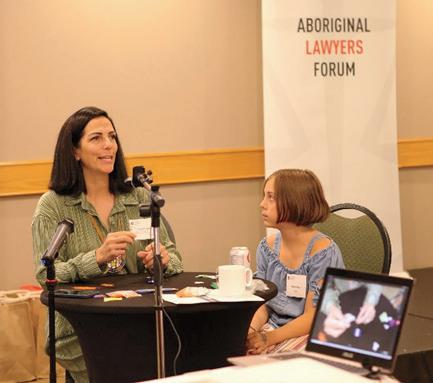
The 16th Annual Aboriginal Lawyers Forum Auction was a roaring success. Thank you to all who donated to this worthy cause. Over $17,500 was raised this year — the fourth consecutive year of record-breaking numbers. All auction proceeds fund opportunities for Indigenous law school and articling students through the Warrior Project
LOOKING AHEAD: 2023/24 SECTION TERM
CBABC members have a lot to look forward to next term. Section Executives are hard at work to bring a robust lineup of virtual and hybrid professional development sessions combined with several networking opportunities like our popular Monte Carlo Night, For the Love of Litigation Dinner, Family Law and Judges’ Dinners and more!
cbabc.org/enroll
Sections are the most important tool in the CBA for professional development, networking and advocacy. Enrollment in 66 BC Sections is free and unlimited.
IT’S TIME TO UPDATE YOUR SECTIONS
Back by popular demand! The return of the Young Lawyers Regional Master Shadowing Series, a much-anticipated event, sold out within days of going live for members. Sessions were hosted in Kelowna with Master Steven Schwartz, in Vancouver with Master John Bilawich, Master Susanna Hughes, and Master Terry Vos, and in Victoria with Master Sandra Harper. Between them they shared insights on the dos and don’ts of attending chambers. Attendees enjoyed a dinner followed by a full day at the courthouse to see chambers proceedings first-hand. After the chambers session, Masters led a debrief and Q&A. The Vancouver Q&A is pictured here.
Expect to see future Master Shadowing sessions in the upcoming term! Enroll in Young Lawyers Sections to register before they sell out.
This term, the Wills & Trusts – Vancouver Section dug deep into the complex issues wills practitioners face. Subjects included e-wills, the intersection of family law and estates, and the potential for notaries to draft trusts and probate applications.
On June 3, Section members came together for the annual Wills & Estates Conference in Richmond. Under the theme, Pathways Forward, members explored today’s emerging estate planning landscape. Topics included the updated BCLI Undue Influence Guide 2023, dementia-friendly practices, Real Estate Planning in the New Disclosure Era and much more.

Participants also enjoyed a networking reception, formal dinner and the annual law trivia challenge.
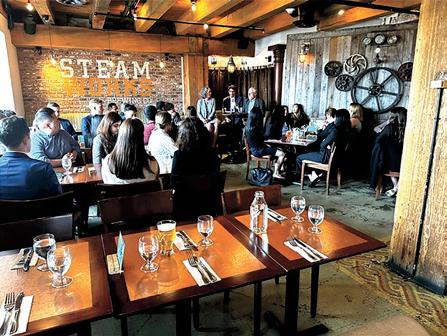
Like many lawyers, I constantly struggle to “turn off my brain.” Current legal issues, client advice, strategies for upcoming negotiations and fast-approaching deadlines are almost always occupying a significant portion of my mental real estate, although I do strive to maintain the ever-elusive work-life balance. Yet work and everything that comes with being a lawyer, is just one aspect of my mental load, fighting for space alongside the other daily tasks required to be an attentive partner, parent and friend, and to maintain my own physical and mental well being. The to-do lists never stop; neither does my brain, and it can be exhausting. But for me, music is the one thing that silences all else, at least for a little while.
Music has always been part of my life. I started taking dance lessons at age 2, piano at age 4, violin at age 6, singing at age 7, trumpet at age 11 and trombone at age 14. I majored in music at university, intent on becoming a music teacher, while also continuing to sing in choirs and play in ensembles. Music was going to be my profession — but I found that once it became a job, it no longer provided the solace for me that it once did (teaching Grade 8 band may also have been a contributing factor!). So I took a break, went back to doing music for pure enjoyment (in my case, singing
in a chamber choir), and decided to see if being a lawyer would be a better career fit (which, fortunately, it was).
During law school, I withdrew from my musical activities to focus on academics. And life, in all aspects, continued to get busier: articling, an associate in private practice, parenthood (twice), a couple of moves, working remotely due to the COVID-19 pandemic (and the associated challenges disconnecting from work).

Turning my brain off became increasingly difficult, resulting in anxiety, insomnia and a general inability to be present in the moment. Ironically, although I had eliminated music in my life due
patterns, enabling easier immersion in the “now,” whether it’s at my kid’s soccer games, around the dinner table or on date night. When it’s time to come back to my desk, tackling that legal issue, crafting that client communication or finding a path through challenging negotiations seems easier. A bit of music is sometimes all I need to return with a fresh perspective or new ideas. I find that actively engaging in music (playing or singing — not just listening) provides the most benefit from a mental health and well-being perspective.
Interested in incorporating music into your daily life? Here are a few suggestions:
Work remotely? Take a ten-minute break to play, or work on teaching yourself, an instrument. There are many great online resources, and most instruments can be rented inexpensively from your local music store.
Try a dance class one night a week.
Join a community group! There are many excellent community choirs and instrumental ensembles in the Lower Mainland and throughout B.C.
to busyness, music was one thing I needed to add back in.
I discovered that music is my reset, my break, even though it takes time away from all of the other things that I need to do everyday. It pulls my brain out of repetitive thought
Learn a musical instrument with your kids, your partner, a colleague or a friend.
So dive in, leave your mental load behind, and make some music!
For me, music is the one thing that silences all else, at least for a little while.
CLEBC is proud to introduce the latest edition of the Civil Appeal Handbook, the ultimate companion for civil appellate law in B.C. Authored by legal professionals Peter R. Senkpiel, KC, Caitlin Ohama-Darcus and Tom A. Posyniak, this authoritative resource combines their expertise in commercial litigation, class actions, written advocacy and appellate practice.

Whether you’re a seasoned practitioner or new to civil appeals, this handbook equips you with essential knowledge and tools. Elevate your persuasive advocacy skills, develop effective appeal strategies, and succeed in the
realm of civil appellate law. Visit cle.bc.ca/civil to learn more.
CLEBC has received some great feedback about its new publication Estates Disputes in British Columbia: A Litigator’s Guide. Scott Morishita of Rice Harbut Elliott was kind enough to share these words:
“Not only does this publication comprehensively set out the relevant law and legislation, but it also provides invaluable practice tips and advice... As a litigator looking to expand my areas of practice, this manual is a welcome and timely addition to my library.” To learn more about Estate Disputes in British Columbia, visit: cle.bc.ca/edbc23

Akey part of any theatre is its board of directors. However, many audiences are unfamiliar with who the board is and what the role of a board member entails.

A board of directors for a theatre is composed of elected members who are interested in taking an active role in the theatre’s ongoing activities and its future. They are also interested in serving as the theatre’s ambassadors in their community. A good board has a diverse group of members from all areas and backgrounds, who can each bring their own expertise and unique perspective to the table. Together, the board governs the theatre’s activities through management oversight and policy setting. The board is also accountable for the transparency and protection of the theatre.
A board’s tasks will vary depending on the theatre’s size. The smaller the theatre, the more closely involved the board. Smaller theatres typically rely on their boards for everyday activities from ushering shows to cold-calling donors. In contrast, larger theatres will look to their board for oversight, general advocacy and policy. By looking at “the big picture” for the theatre in its community, the larger theatre’s artistic directors have the freedom to make day-to-day operational decisions.
Regardless of size, the board’s ability to help its theatre with strategic planning is critical. For example, for the last two years, I have been Secretary for the board of Carousel Theatre for Young People (CTYP). The board is dedicated to CTYP’s mission of creating theatre for young audiences and offering drama schools that inspire, educate and empower young people. One of our programs is a drag camp. The drag camp is open to kids in two age groups — 7 to 11 and 12 to 17 — with an interest in expressing themselves through clothing, makeup and performance. Unfortunately, since CTYP announced the drag camp in March 2023, CTYP has been barraged by threatening emails and phone calls
— funds we would have rather put toward CTYP’s diverse, inclusive and engaging programming. It has been “all hands-on deck” for several months as CTYP has weathered this storm. Thankfully, CTYP has received local community support for the drag camp. Most recently on July 4, 2023, supporters gathered in front of CTYP’s theatre on Granville Island in a positive demonstration of support in response to a planned protest against the drag camp.
Acting on a board allows you to make a difference in your arts community while playing an active role contributing to your theatre’s mission. Boards are always looking for individuals with strong leadership skills, good connections with funding agencies, and diversity in order to expand audiences and funding. As a lawyer, your skill set would be an asset for long-range planning and troubleshooting.
If you are interested in acting on a theatre board, consider joining your favourite theatre company and running for election. You should be prepared to spend the time necessary to serve on the board, be willing to make a personal contribution, and actively fundraise to meet the theatre’s growing financial needs — this especially as theatre box office sales have dropped due to the continuing pandemic. The most important qualities of any board member are curiosity, passion, and desire to help your theatre thrive!
in response — the backlash has been subject of the news. As a board, we are supporting CTYP during this challenging time. We have hosted multiple fundraisers to hire additional security to be present at events
The most important qualities of any board member are curiosity, passion, and desire to help your theatre thrive!
If I had my way, I’d be a writer. Not to say that being a lawyer is bad (in fact, I quite enjoy it), it’s just I’m a masochist.
I’ve tried to get published on many occasions, having written my first novel when I was nineteen and my latest between 2010 and 2017. It was this latter book that got me the most positive response I ever received from someone in the industry, when I was told it was written well enough to be published but, because of the depressing subject matter, it wouldn’t sell.
Having seemingly come to an end in pursuit of publishing depressing stories, I decided to shift to writing a series of humorous shorts. This time I would take no chances. I would create an Amazon account and publish it myself. Of course, I didn’t know anything about self-publishing, but how hard could it be?
Not hard at all, if you had the money and the want to spend that money on a nice cover.
Yes, I had forgotten the golden rule of publishing: it’s not how good the stories are, it’s how eye catching the cover is. So where does one get a nice eye-catching cover? I had no idea, so I spoke to a friend of mine who had published a number of books herself.
That was easy, she told me, there were many available sources as long as you were willing to pay... a lot.

Many times more that you would earn back.
While it was true that I didn’t start writing to make money, I also didn’t start writing to lose money either. I had always thought of it as a breakeven proposition.
So, having to decide between paying for my daughter’s dance lessons or paying for a nice cover for my collection of short stories, I chose the dance lessons and decided to make the cover myself.
I would paint something. Fortunately for me, and unfortunately for the world of art as a whole, I had taken up painting, mainly because my son showed interest in it and I wanted to share his hobby. He soon lost interest, but I continued.
the title. I published it on Amazon for a $1.99.
A few people read it, and I did get one review (5 stars, yay!) by someone I didn’t know. I took that as a sign that I had accomplished... something and promptly removed the book from sale.
All in all, it had been on Amazon for about half the time it took to write. Once it was taken down, I decided I would try to get the stories published individually. What I didn’t know (amongst the many things I didn’t know) was that once a story is published, even self-published, there were very few places that would consider it. I did find one magazine that was willing to take a look, but after they hummed and hawed over one of the stories for about three months, they told me they had enough already to fill their magazine. They asked me to submit more, for future magazines.
That is where my writing seems to be right now: submitting stories, getting rejected but being told I should keep submitting. Strangely enough, however, my paintings have become far more popular than my stories ever have. I have now sold a number of paintings and even have created works upon people’s requests. I still think of myself as a pretty terrible artist but I’m enjoying the ego boost.
So I created what I thought was a nice cover by taking a picture of some artwork, downloading it to my computer and then using a software program to add in
I had forgotten the golden rule of publishing, it’s not how good the stories are, it’s how eye catching the cover is.


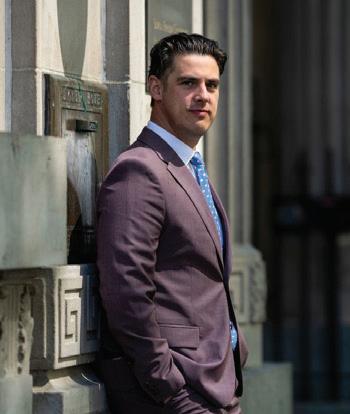
The Canadian Centre for Elder Law’s (CCEL) project on exploring law and policy responses to support vulnerable victims and witnesses of abuse is in its final stages. The study paper will highlight existing frameworks in B.C. for supporting vulnerable witnesses with a view to raising awareness across sectors about the policies that guide Crown Counsel and the supports available for vulnerable adult witnesses. This project also examines how this issue is addressed in other jurisdictions, extracting best practices and developing educational tools to support Crown counsel, the RCMP, Victim Services staff and support workers for vulnerable adults. As part of Victims and Survivors of Crime Week in May, CCEL conducted a webinar highlighting some of their research and ways in which victim support workers can assist vulnerable adult witnesses in accessing testimonial aids.
The presentation, which was co-hosted by the Canadian Network for the Prevention of Elder Abuse and Elder Abuse Prevention Ontario, can be found on the project page on bcli.org

It’s 11:00 p.m., I’m still working, stressed out about tomorrow, and in desperate need of a shower. Is it the day before a big trial? No. It’s dress rehearsal for The Lawyer Show. And despite it all, I am thrilled to be here.
The Lawyer Show has raised tens of thousands of dollars for local theatre companies Carousel Theatre for Young People and Touchstone Theatre over many years. While I care very much about supporting theatre for young people and Canadian playwrights — causes championed by these two groups — I must admit that I mostly do it for the love of it.
I first joined The Lawyer Show in 2014’s Legally Blonde while articling at a big downtown firm. Like many of the lawyers that regularly take part in the show, I had a history in music, dance and theatre before law school. However, outside of The Lawyer Show, things like “I got served with a short leave application!” or “a senior partner needs me to stay late!” aren’t understood excuses for missing rehearsal. For me, The Lawyer Show was a way to keep theatre in my life as I was starting out in a demanding career.
Balance is hard at the best of times (particularly in some of the shoes we were wearing in Legally Blonde) and in the week leading up to the performance, the time commitment

was extreme. Did my work suffer during the two weeks surrounding the show? Sure. However, balance means more than having free time. To me, it also means making time for the things you love and the things that give back to you. If you’re really lucky, that thing also gives back to
off due to COVID, it was thrilling to be back in the rehearsal studio in February for Mamma Mia! with many of the usual suspects. While each year we see new faces with amazing talent, there is a group of us who have been doing the show regularly, many for far longer than me. It is this feeling of community, always welcoming both old hats and new talents, that keeps me coming back.
Well, that and the applause. It’s hard to beat the feeling of a standing ovation!
your community. For so many of us, The Lawyer Show is that thing that eats up your time and energy,
While I know that doing a quick change into a glitter encrusted denim jumpsuit and boa in order to run onstage for 10-minute dance number in platform boots (if you missed seeing Mamma Mia! this year, you really missed out) is not everyone’s idea of getting away from work, it is definitely mine. There’s nothing for clearing your head like stuffing it full of lines and music and choreography. And there’s nothing like joining together to build something incredible with a group of people who understand both your love of the performing arts and your challenging career.
If this sounds like it might be your kind of thing, come out and join us! If not, I hope you too have found something that you can devote yourself to, and that — in turn — gives you so much back.
makes work really challenging for a while, but ultimately brings balance in our lives.
Despite the severe lack of free time in my life between articling and rehearsals in 2014, I have been back every year since. After a few years
And to all my Lawyer Show pals, see you next year!
It’s hard to beat the feeling of a standing ovation!







Storytelling is at the heart of the law and its’ fellow friend, art. Both have provided solace to me as I have evolved in this bittersweet tale of life. At times, art has been the saviour and on more than one occasion, the practice of law has underscored the ebb and flow of human life searching for certainty and clarity. Both law and art strive to meet this objective.
Like all great theatre, the setting, characters and costumes matter. To the trial lawyer, this is evident. What greater theatre than the one that unfolds in a courtroom? The presiding judge hearing the story and the lawyer telling the story of each character. Unlike a book of fiction, despite the efforts of counsel, the story unfolds with abandon — perhaps due to the characters themselves. What is clear is that the audience is beckoned to partake in this ancient desire to be heard, seen and understood.
The artist’s calling is the same, regardless of the medium. A painting, poem or film call out with the same message albeit with no similar seeking of remedy. Or perhaps not. What remedy are we seeking as purveyors of art? The alleviation of pain, of human suffering. This is the same matrix that confronts the purveyors of law.
The art of practising law means being alive to the nuances of the written and spoken word. It also
means being alive to the lived experiences of others, including our own.
In telling the story of others, we, as lawyers, inevitably tell our own. This is a sobering thought. We consider ourselves separate from our clients, the court and our learned friends. Perhaps artists are in the same predicament — how does a novelist let go of their novel without feeling a sense of attachment and loss? Why do trial lawyers commiserate about their respective war stories which never leave them?
Contrary to popular thought and possibly our own expectations, the law is not black and white. It does
than not. They are also engaged in acts of resistance. Many rebels are cloaked in the garb of law and that of art. I am grateful for the same.
Reading a book underscores a fundamental fact: we are not alone. Practising law underscores a fundamental fact: we are not alone. Am I viewing the practice of law with rose tinted glasses? Perhaps so — unlike art, the practice takes a toll on us lawyers. It requires us to have reprieve, solace. Does art do the same? Not so much for those who receive but for those who create? Are we in the same predicament?
I would like to think that we, as lawyers, would be welcome to sit amongst the poets, painters, philosophers and the mystics amongst us. In fact, with great certainty and clarity, I respectfully submit that we would be welcome to sit at the table reserved for the artists in this world.
I have been fortunate to sit on the board of the Indian Summer Art’s Society and to attend our local Indian Summer Festival. Inspiration and wonder have been experienced from my attendance of the annual New Yorker festival in New York City and Jaipur Literature Festival in Jaipur, India.
not provide absolute certainty and consistency despite noble attempts to do so. Rather, much like art, it attempts to make sense of the human experience and uses logic, rules, and often grace in rendering an outcome, a remedy.
Both art and law are persuasive acts — the audience may not be the same but they have more in common
On many occasions, I have been asked to share stories from the courtroom.
As witnesses to the human journeys of many, we in turn have become poets, philosophers — modern day artist warriors.
The art of practising law means being alive to the nuances of the written and spoken word.DAVID J. BILINSKY

r Start movin’ on, movin’ on I feel on a roll since you’ve been gone... r
— Music and Sheeran, A. Dessner,Lyrics by Ed
recorded by Ed
Sheeran.One of the hardest decisions a law firm may have to make is to move from their existing accounting system to a new one. Time and circumstances change and firms can outgrow their systems, the developers may change how the application works, the costs of maintaining a legacy system may become prohibitive, hardware that hosts the application may become outdated — there are many reasons for a firm to consider moving on. But for sure this is not a decision to be taken lightly. There is the whole process of how to select a new system to consider. That decision will be unique to each firm, as there is “no one size fits all” solution. But all firms, once the new application is selected, must go through a similar conversion process. Here is an overview of some of the points to consider.
CLEAN YOUR DATA: Chances are your data dates back years, possibly decades. There is an expression GIGO that applies. It stands for “Garbage in, Garbage Out.” You will be relying on someone to migrate your old data to the new system and that involves trying to achieve as good an overlap between the old system and the new one. But if data has been improperly entered, is “dirty” or imperfect, this will cause no end of grief when trying to move it into the new system. Take time to clean up the data fields that will be moved to speed up the conversion process and reduce headaches.
SET A DEADLINE: There are many decision points inherent in any conversion process: investigate, determine alternatives, evaluate fit, decide on one product, negotiate the purchase, negotiate support, negotiate training, set date to start conversion, set testing date, set cut-over date, evaluate the process and determine takeaways for future projects. While these deadline dates need to be flexible, they also need to reasonably stay on schedule to keep the entire process moving forward successfully.
GET BUY IN: Acquiring the best fitting software may be pointless unless everyone in the firm buys into the project, commits to using the new system and works to achieve the same goals. Passive aggressive behaviours, sabotage or simply working around the system all reduce the likelihood of a successful launch. Your new system may incorporate features not found on the earlier system that will benefit the whole firm if adopted by all. Be aware of the potential barriers and actively plan to overcome them.
WORK WITH YOUR DEVELOPER AND CONVERSION TEAM: Chances are that a conversion expert will be brought in to make the conversion easier, faster and orderly. Their experience gained from prior conversions make these people worth their salt. Listen to them, bring them into the process and follow their advice… chances are this will save you headaches and grief down the road.
GO SLOW: Putting your foot on the accelerator is probably not the best thing to do. Slow and steady wins the race rather than being rushed and potentially having to go back and correct things that were not well understood at the time.
TRAIN, TRAIN, TRAIN: The new system represents a different way of doing things. Processes must be unlearned and new ones taught. Patience is a virtue, unfortunately in a high-pressure law firm, it may also be scarce. Put the time into training to bring people with you and reduce the errors that may occur when people try to figure it out themselves.
MANAGERIAL OVERSIGHT: Lastly, invest in managerial oversight. Your insight into the firm cannot be matched by any outside advisor. Work with your team to ensure that the best decisions are being made at each point in the process.
After all, once the conversion is over and you are moving down the highway with your new system humming, you will say that you feel on a roll since the old system is gone.
Email: daveb@thoughtfullaw.com Blog: thoughtfullaw.com
Law and theatre have intertwined through the ages. In the European legal tradition, elements of ritual and storytelling have played similar functions in both juridical processes and entertainment: rituals highlight the importance of the event while emotionally engaging storytelling deepens learning. Orators and lawyers have performed in and written plays for at least 2,500 years. Notably, during the English Renaissance, holiday “revels” at the Inns of Court encouraged the development of courtroom dramas and involved the Inns’ residents in performances akin to the modern articling student skit at holiday parties.
Currently, TV with a legal focus (Billions, The Lincoln Lawyer) and modern versions of morality plays (Breaking Bad, Yellowjackets, Dead to Me) abound in the world of entertainment. While it is outside the scope of this article, the ways in which storytelling in these legal entertainments simultaneously relies on the inherent drama of an adversarial legal system and arguably reinforces competitive social norms are thought-provoking consequences of the mutual history of law and theatre. Making space for Indigenous legal orders and processes and building more collaborative decisionmaking models may require making space for alternative forms of storytelling and theatre.
With so many historical and contemporary interconnections and crossinfluences between law and theatre, it’s surprising that legal education
draws less from drama pedagogy than it could. While moot courts and negotiation role plays continue the learning traditions of the Renaissance-era Inns of Court, are there other forms of theatre skills that might serve legal professionals? Let’s focus here on two areas where theatre offers particularly relevant learning opportunities for lawyers: applied improvisation skills as they support engagement with clients, negotiation, and collaborative decision-making; and techniques for examining both systemic and personal power dynamics used in Theatre of the Oppressed, status games, and theatre for community and dialogue.
This summer, Vancouver hosts the global Applied Improvisation Network conference. Conference headliner Kat Koppett is well-recognized for breaking down improv skills for business audiences interested in professional development. For lawyers, skills in trust-building, storytelling, and listening are clearly relevant. Sometimes less obvious is the fundamental skill that improvisers call “accepting offers” or the “yes, and…” principle; for negotiators, mediators, and others engaged in collaborative processes, this can translate to letting go of the legally trained habit of “listening to rebut” so as to open up alternative solutions. As a long-time mediation trainer, I can attest that cross-training for this
skill by engaging in improv games can advance a new mediator’s skills surprisingly much faster than mediation role play and practice alone.
Law Society Advisory Committees, Working Groups and Task Forces are engaged in topics directly connected with examining power and privilege in our legal systems, including Truth and Reconciliation, Equity, Diversity and Inclusion and Mental Health. In the theatre world, tools and techniques for such explorations have been growing for decades. Augusto Boal, in particular, advanced interactive theatre techniques to support the voices of disempowered individuals and communities. At its most explicitly law-oriented, Boal’s work included the creation of “legislative theatre” to invite constituents to contribute opinions to lawmaking processes. Under David Diamond’s leadership, the local “Theatre for Living” undertook a legislative theatre project in 2004, and produced numerous other projects exploring power in ways that could directly inform our work around access to justice.
As individual lawyers seek to develop skills in collaboration and the legal community undertakes increasing work around systemic challenges, we could lean into our history of learning from the theatre. There is scope for lawyers to adopt (or adapt) theatrical tools that were created to enhance the ability to work together, to address problematic power dynamics, and to increase voice in undertaking systemic change.
Sharon Sutherland is Executive Director at Mediate BC. She studied and practised both Law and Theatre, separately and together. Twitter: @ssuth, @mediatebcsoc — Personal LinkedIn — Business LinkedIn

In the early summer of 1973, a young Dirk James Sigalet was approaching the end of his articles. Soon to be hired by his uncle, principal and mentor Bruce Fraser, KC, Dirk was instilled with the traditions of the law profession from a very young age.
Just one week before his call ceremony, Dirk was given a big break: an opportunity to junior another lawyer named Jack Cram. For his first trial, this was a unique one. The pair were assigned to defend a woman who had been accused of murdering her fisherman husband with a fillet knife.
When Dirk arrived at the courthouse, the presiding judge graciously invited him to pass through the gate at the Bar and sit at the defence counsel’s table with Jack. He was wearing the usual articling student garb, a dark, inconspicuous well-worn suit and tie.
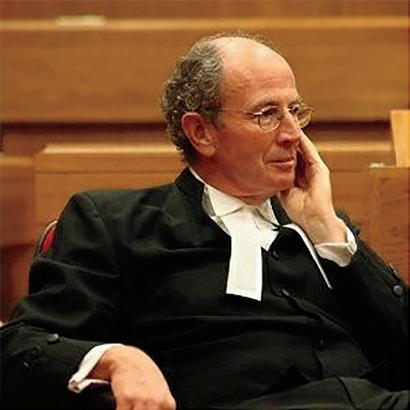
Deciding enough was enough, and that his nephew should look the part in the courtroom, Bruce stepped in and generously gifted Dirk some newly tailored barrister robes.
First thing on Monday, Dirk proudly donned his new robes and posed for photos at his call ceremony. Then he rushed straight to the courthouse where
the murder trial was already underway. On arrival, the presiding judge couldn’t help but notice Dirk’s hesitant approach to the Bar’s gate. He glanced at Dirk’s new robes and
announced, “Mr. Sigalet, you no longer need the Court’s permission to pass through this Bar and sit at a Counsel table, this is now your privilege. Welcome. Now, let’s proceed.”
Many years later, when Dirk was recognized for his contributions to the profession and appointed Queen’s Counsel (now King’s Counsel), he hung up his robe and joined Uncle Bruce for a toast with a glass of single malt. It was a toast to Bruce’s generous gift all those years ago, and his patient and wise mentorship.
A barrister’s robes can hold many stories. From how they were obtained, their first call ceremony, to the trials they oversaw and everything in between until they are hung up for the final time.

But the story doesn’t need to end there. Exactly fifty years after Dirk was gifted his robe, new lawyer Valérie Lebrun contacted the CBABC Robe Bank hoping to borrow a robe for her call ceremony. She continued the legacy of that very same robe by wearing it with pride and joy for the most special moment in her career.
Dirk’s robe is now pressed and dry cleaned, hanging in the CBABC office waiting for the next lawyer to add to its story.
Follow Dirk’s robe and all the other generously donated robes in the CBABC Robe Bank
The Law Foundation’s Legal Research Fund supports research projects that aim to advance access to justice for people in British Columbia. Eligible grant seekers can apply for up to $25,000 to support research that has the potential to advance knowledge related to law, social policy, and the administration of justice. The Foundation encourages applications where the proposed research has the potential to promote inclusion and meaningful responses to ongoing harms to equity-denied people and communities through the legal system.
The Foundation is accepting applications to the Legal Research Fund until 5:00 p.m. on September 22, 2023
This funding call is open to:
Members of the Law Faculties at Thompson Rivers
the University of Victoria, as long as the application is submitted with the express approval of their Dean.
Members of other faculties in British Columbia, as long as the research is law-related and the application is submitted with the express approval of their Dean.
Members of the legal profession in British Columbia who can demonstrate they have the background, interests, and capacity to carry out legal research.

Non-profit organizations with expertise in carrying out legal research.
To learn more about the funding call and to learn how to submit an application, please click here.

Advance your career, improve your practice and build your business. CBABC members enjoy 50% off most programs, with many offered for free.
Ahead of the National Day for Truth & Reconciliation, CBABC brings you the Advancing Reconciliation Series. This year’s program builds on the foundational learning gained to advance reconciliation in a meaningful way for your practice and work with Indigenous peoples and communities. Attendees learn how the complexities of UNDRIP and DRIPA impact your practice, moving reconciliation forward through a trauma-informed lens and more.
Register >
Starting your career as a lawyer is an exciting time. It is also when you realize that many aspects of being a lawyer are not taught in law school or during articling. Our Career Starter Series offers advice, tools and resources to help you build a successful career path, wherever your legal background takes you. This series is recommended for early-career lawyers from all practice areas.
Register >
Coming to a community near you
Join experienced practitioners for an interactive, in-person seminar to discuss real-life ethical issues, case studies and the BC Code of Conduct. Walk away with critical thinking skills for how to approach ethical dilemmas that challenge your professional responsibility. You can look forward to sessions in Victoria, Surrey, Kelowna and Nanaimo.
Register >
Now’s the time to catch up on your CPD credits. Learn how to chart your career path with the Career Starter Series, challenge unconscious bias in the workplace with the Equality, Diversity & Inclusion Series, and understand how to support the next generation of lawyers with the Talent Management Series.
Build your foundation knowledge and prepare for the Advancing Reconciliation series this fall with our Truth & Reconciliation sessions on-demand.
View the catalogue >

In the early 70s, travelling with my family to London, my dad frequented a lot of art galleries that featured works that only the landed gentry could afford. At one gallery, the art dealer showed him a 5 x 7 squiggle that looked like some sort of abstract rooster drawn by a child in about 45 seconds. So much for my appreciation of art. It was, in fact, an original Picasso squiggle, and the year after Pablo died, I think it was fetching £2000. That was a princely sum even in those days, but I remember saying to my dad “do you really think Picasso needs the money?” Now if my dad had bought that Picasso squiggle, he might’ve had a much more enjoyable and financially secure retirement than he did, but the point still resonates with me. Why buy art from dead artists when the living ones could use the cash? So, think about that when you are buying art for law office or your house.
Living by those words, all the art that my wife and I have collected over the past 30 years was purchased when all the artists were alive to enjoy the money. My latest purchase was an original piece by Australian artist Sally West who paints a lot of seascapes of Bondi Beach in Sydney. While looking at her work over the internet, I was blown away by one piece in particular, and bought it for my 65th birthday; a year before I ever saw Bondi.
My wife and I seem to have a pattern of buying art over the internet. We were stranded in Cairo when the pandemic hit, and while on hold for hours trying to book a flight home, I found a Vancouver artist on the
web named John Ferrie who did an amazing painting of False Creek and Vancouver House. We liked it so much, we bought it from our hotel room on the Nile and picked it up when we came home. I believe it’s our only souvenir of Cairo.
While in Las Vegas in 2014, we stumbled into a gallery displaying photographic art by William Carr and were mesmerized by a massive photograph of Riomaggiore in the Cinque Terre where we had been a few years earlier. The photo seemed to glow even when the showroom lights were dimmed. Rather than being backlit with neon bulbs, Carr’s photos are created using a substrate that gives the work luminescence. When we got home, we measured where it might go and bought it (again, over the internet). It’s become the centerpiece of our living room.
In a Tofino gallery a few years ago, I couldn’t keep my eyes off of a glass salmon created by Vancouver Island artist Christopher Smith who specializes in, you guessed it, glass salmons. Tofino has some great galleries, including the Tofino Gallery of Contemporary Art.
Another local artist, Angie Hemphill, did an amazing painting of our house in New Westminster, which my wife gave me for my birthday in anticipation of us downsizing when the kids left. “Wherever we go, we’ll always have the house,” she said.
The painting caused us to cancel our downsizing plan and stay in our house; probably forever.
Our last renovation led us to buy art by another neighbour in New West, whose “art name” is J. Charles but he’s the father of one of my daughter’s closest friends, who we’ve known for 25 years. We have about three of his pieces.
Finally, I commissioned a piece by Vancouver artist Larry Tillyer of our kids in a little yellow dingy on the beach near Gabriola Island when they were small. I gave Larry some photographs for his painting. Larry removed their lifejackets for the piece, but the kids are now happily floating in Monet’s Pond, which I guess is what artists do. Mind you, I have to remind people that they had their lifejackets on for the original photo.
None of our art was particularly expensive and we bought it because we liked it, not because we thought it would increase in value. I’m sure all the artists appreciated that they got paid for their art while they were alive rather than after they died.
Tony Wilson, KC is a Vancouver Franchise Lawyer, a Life Bencher of the Law Society, and an Adjunct Professor at TRU Law School. Over the past two decades, he has been a regular columnist for The Globe and Mail, Canadian Lawyer, and other publications. This is his 20th year writing “Nothing Official” for BarTalk, and as everyone should know by now, the opinions expressed in “Nothing Official” are his alone and do not reflect the views of the Law Society, the CBABC, or their respective members.
Adrienne Adams joined Clark Wilson as an associate in their Private Company Mergers & Acquisitions and Business Succession groups. Adrienne articled with the firm prior to her call to the Bar and they are delighted to welcome her back.
Pamela Sheppard joined Farris as a partner in the litigation group. Pam’s practice focuses on commercial litigation; complex family asset division; and child and spousal support claims.
Kyle Gough joined Clark Wilson as an associate in their Capital Markets, Securities, Mergers & Acquisitions group. Kyle articled with the firm prior to his call to the Bar and we they delighted to welcome him back.

Manveer Sall
joined Clark Wilson as an associate in their Capital Markets, Securities, Mergers & Acquisitions group. Manveer articled with the firm prior to his call to the Bar and they are delighted to welcome him back.

Yasmin D’Costa joined Farris as an associate in the Litigation group. Yasmin’s practice is a blend of commercial & civil litigation and family law disputes.


Stephanie B. Talbot started her own family law practice, Flow Family Law Corporation Ltd. She will continue to serve clients in the Fraser Valley in all areas of family law.


Joshua Steeper joined the Victoria offices of Beacon Law Centre as the Head of Corporate and Commercial group.
Eric Sherbine
joined DLA Piper Canada as General Counsel working out of the Vancouver office. Eric is an experienced conflicts lawyer and his role will involve identifying and resolving potential conflicts of interest and related compliance issues.


Chanelle Gilbert is now at Murrell & Ittah — a firm formed by merger of Herald Street Law (her previous firm) and Randall & Murrell. Chanelle will continue her estate planning and administration practice.

Pamela Connolly joined West Coast Workplace Law as senior associate, continuing to expand the firm’s employment law, workplace investigations and mediation practice. Pamela will lead the firm’s new Okanagan office.

Connor Pouryekta

joined Lawson Lundell as an associate in their Corporate Finance and Securities group. Connor was called to the British Columbia Bar in 2023.
Lauren Dresselhuis
joined Lawson Lundell as an associate in their Labour, Employment & Human Rights group. Lauren was called to the British Columbia Bar in 2023. Lauren was previously an articling student at Lawson Lundell.

Jillian Epp
joined Lawson Lundell as an associate in their Litigation & Dispute Resolution group. Jillian was called to the British Columbia Bar in 2023. Jillian was previously an articling student at Lawson Lundell.
Amy Hill
joined Lawson Lundell as an associate in their Corporate Commercial group. Amy was called to the British Columbia Bar in 2023. Amy was previously an articling student at Lawson Lundell.
Bar Moves space is at a premium and available for free to members on a first-come first-served basis, so send your Bar Move (max. 30 words) and a high-resolution headshot photo to bartalk@cbabc.org now.
TO VIEW ALL BAR MOVES, GO TO CBABC.ORG/BARMOVES
Jeevan Jdali
joined Lawson Lundell as an associate in their Corporate Commercial group. Jeevan was called to the British Columbia Bar in 2023. Jeevan was previously an articling student at Lawson Lundell.



Kyle Ramsey joined Pushor Mitchell in 2022 and called to the British Columbia Bar in 2023. Kyle’s area of focus includes tax and trust law, estate planning and administration, business law and civil litigation.

Kimia Jalilvand joined Lawson Lundell as an associate in their Litigation and Dispute Resolution group. Kimia was called to the British Columbia Bar in 2023. Kimia was previously an articling student at Lawson Lundell.

Cole Rodocker
Since graduating as the Gold Medalist at TRU Law School in 2016, Cole has proven himself to be an outstanding young litigator and has quickly moved up the ranks to become the newest partner at Hamilton Duncan.
Lesley Russell joined Harper Grey as an associate practising with their Business Law group. Lesley was called to the BC Bar in 2016 and was previously with CBM Lawyers.

Jennifer (Jen) Poirier joined DLA Piper (Canada) LLP’s Vancouver office as Counsel in the Securities group. Jennifer represents companies and investment dealers in a range of corporate transactions.

As a trusted voice in the legal community, CBABC offers unique opportunities to reach B.C. lawyers across multiple CBABC platforms, including our magazine, e-newsletters, job board, conferences and events.
More than a Magazine. A destination for BC Lawyers
BarTalk is the magazine for the legal profession in BC. Published six times a year, BarTalk not only covers hot-topics but addresses all aspects of practicing law in today’s ever-changing landscape. Print, digital, and online advertising placements available to showcase your brand.
The premier destination for BC legal careers
Recruiters and firms alike confidently post on this ‘Go To’ platform to maximize exposure of their available legal opportunities to 7,700+ CBABC members. Leverage two ways: Job postings or banner advertising on our highest traffic webpage.
Current events in the legal community delivered weekly
Tap into more than 6,400 subscribers who eagerly await our weekly newsletter to land in their inboxes. Packed with news, events, PD and exclusive job opportunities, News + Jobs is an excellent vehicle to get your brand message direct to the legal community.
Position your business in front of your target audience through sponsored in-person, virtual or hybrid events. Whether your goals are networking, product demonstration, thought leadership or brand awareness, CBABC offers opportunities at annual section and industry events, PD workshops and targeted conferences.
Strategically place advertising across multiple platforms or throughout the year and save on your overall advertising package. Additional discounts are offered for CBABC member firms, registered non-profits and recruitment agencies. Contact us to talk about your current marketing objectives.
cbabc.org/ads | ads@cbabc.org